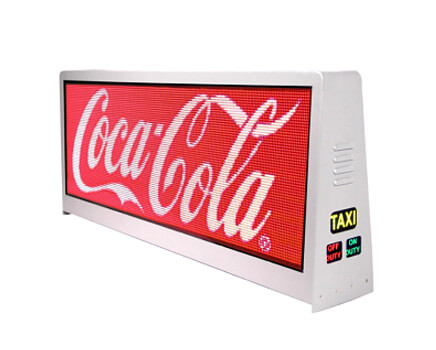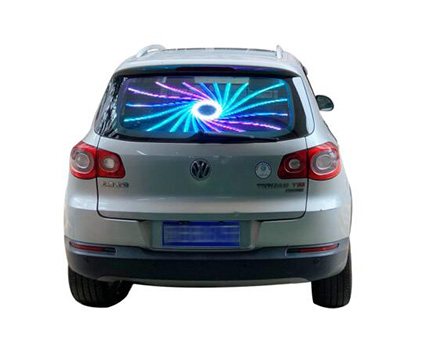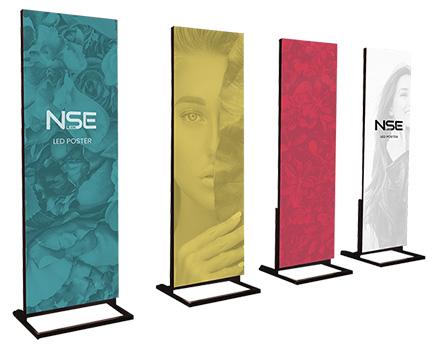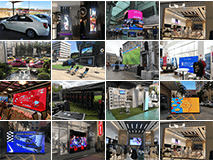We will list some of the main differences between them.
The method of generating light. As you may know, LCDs require a backlight, but LEDs can emit their own light. As a result, LED displays have thinner and lighter cases than LCD displays.
Usage Applications. LED displays can be used for both indoor and outdoor applications, but LCD displays are primarily used indoors. That's because LED poster screens are far more protective than LCD poster screens, so LED displays also have a longer working life.
For HD images, LED displays also have better results. It has higher brightness, wider color gamut, high refresh rate, and can support seamless splicing.
What is LCD poster?
LCD stands for Liquid Crystal Display. LCD does not emit light directly, it has a backlight to help produce the image. This means that if you want it to light up, there should be a light behind it, because it does not emit its own light. The light is what we call the "backlight".
Think of the structure of an LCD monitor as a sandwich with different layers: first, there is a polarizing filter on the top layer, then a protective layer, then the LCD sheet, and then the backlight on the back.
LCD monitors are typically used in indoor environments where ambient light is usually limited and controlled. It has the advantages of high definition, aesthetics, and a lower initial price if you only want a small screen.
What is an LED poster screen?
The full name of LED is Light Emitting Diode and it provides its own light, meaning no backlight is needed. By lighting up or turning off the light beads, it can display a specific image on the screen.
LED poster screen can be used indoors or outdoors and has high water and dust resistance. In addition, it has high contrast ratio and high brightness, making it resistant to changes in ambient light. 3.
LED Poster Screen or LCD Poster?
After we understand the concept and working principle of LED poster display and LCD poster, what is the difference between them?
1) Power consumption
LED posters and LCD posters power consumption ratio of about 1:10, which means that the poster LED display is much more energy efficient than the latter.
This difference comes from their structure and considers the cost of electricity as one of your important factors when considering your budget, as the cost of display power consumption will account for a large part of your operating costs.
2) Refresh Rate
In general, poster LED screens have a higher refresh rate because LED displays convert electrical energy into light energy.
When displaying video, a high refresh rate helps reduce latency and minimize ghosting. Moreover, the resolution is higher and the color gamut is wider.
3) Brightness
In general, LED displays have higher brightness than LCD displays, an advantage that will play a more prominent role in outdoor use scenarios. For example, in direct sunlight, sometimes the brightness has to exceed 4600nit to display the content clearly. LED screens, on the other hand, can be as bright as even 10,000nit, which means no fear in strong ambient light.
But the maximum brightness of the poster LCD screen is around 3000nit, which is not suitable for outdoor applications.
4) Customization capability
One of the main differences between LED posters and LCD posters is the ability to customize. Many LED poster manufacturers will accept custom cabinets, while LCD screens often do not meet such requirements. Manufacturers usually only produce LCD display cabinets with specific specifications.
5) Viewing angle
LED displays have a wider viewing angle, up to about 180°, to ensure that people can see the image clearly from different angles, while LCD posters have a narrower viewing angle.
6) Working life (durability)
Generally speaking, LED posters can have a lifetime of 80,000 hours or more, while LCD screens have a shorter lifetime, especially when customers place them in outdoor applications.
LCDs for outdoor applications sometimes overheat, which can cause the system to stop. Many LCD posters only remain in proper working condition for a few months or a year before needing to be returned to the manufacturer for repair. The entire life cycle is usually less than 2-3 years.
7) Thickness
LED poster screens are usually thinner than LCD posters because LCD screens have more layers of structure, as we mentioned above.
8) Color gamut
Full color LED displays have a wider color gamut, less color distortion, and more vivid expression.
9) Initial Price Point
LCD technology has been widely used since it was first applied to digital watches in the early 70s. Therefore, the initial price is relatively low. However, when the screen size is larger, it is conversely more advantageous to choose an LED display.
10) 4K display
Many LCD displays cannot support 4K displays, while LED displays can achieve true 4K clarity. In a market where higher resolutions are drawing more customer attention, the 4K feature is certainly an outstanding advantage.

 English / America
English / America 简体中文 / 中国
简体中文 / 中国 Español / España
Español / España Italiano / Italia
Italiano / Italia




















